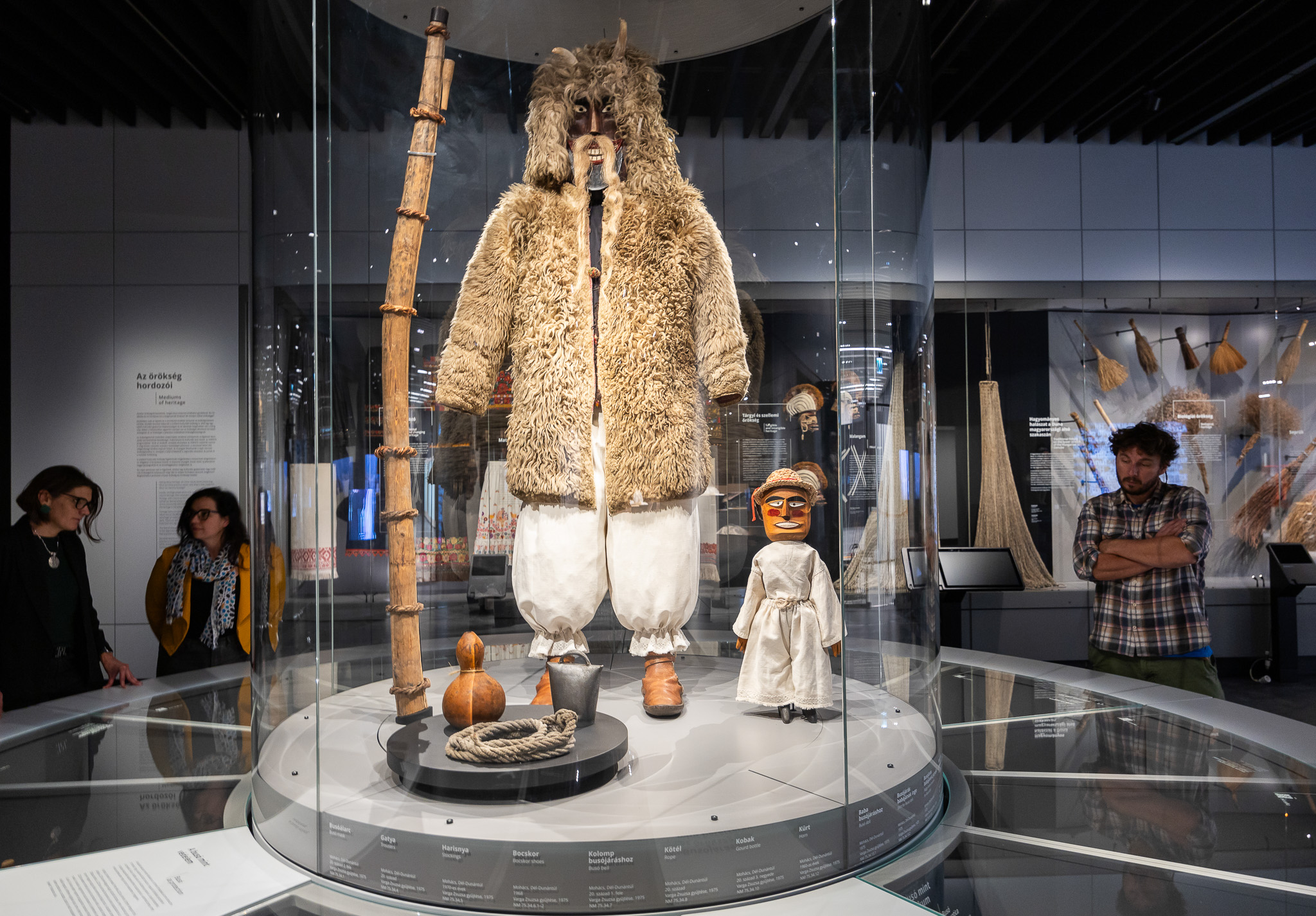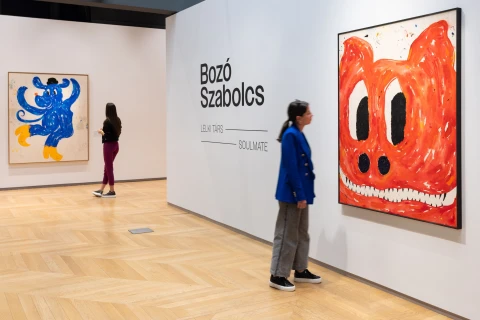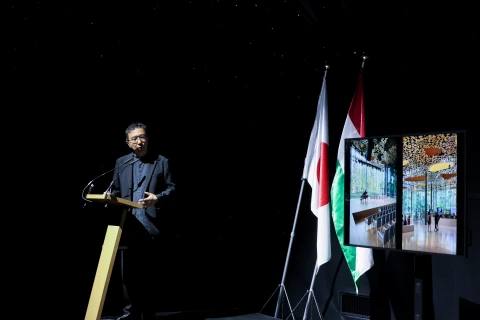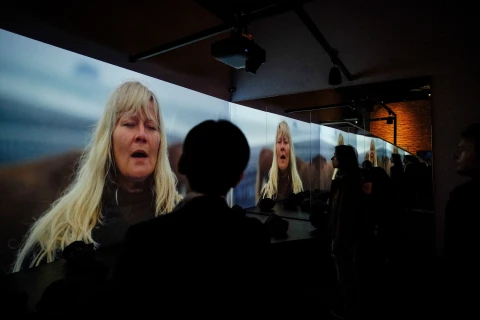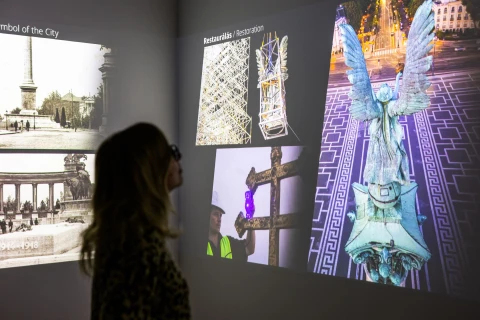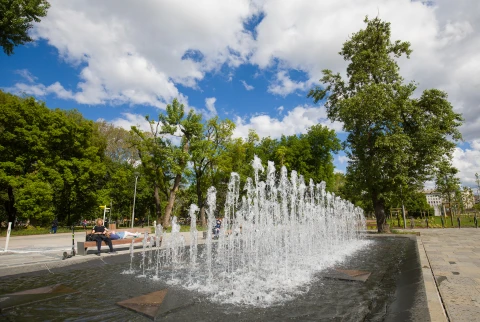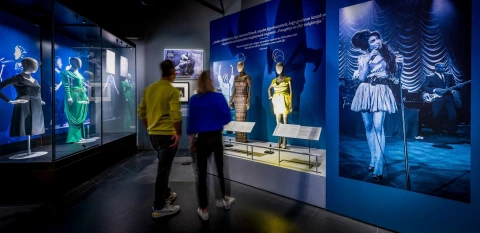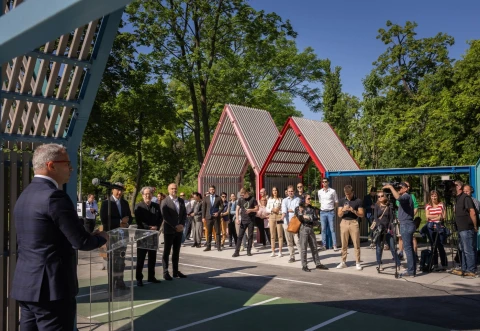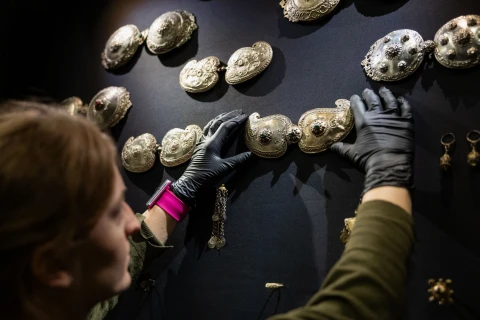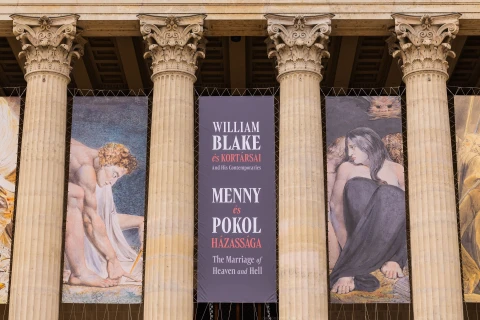
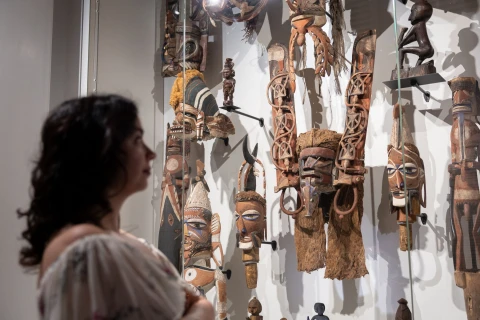
THE MUSEUM OF ETHNOGRAPHY OPENS ITS LARGEST EVER, MOST COMPREHENSIVE PERMANENT EXHIBITION
The exhibition covering more than 3,000 square metres features almost 3,600 artefacts in 8 thematic units. The creation of a new exhibition of Hungarian and international themes covering an area three times the size of the Kossuth Square building had an impact on the Museum’s public spaces, offering various novelties and services to enhance visitor experience.
The Museum of Ethnography is one of Europe's prominent thematic museums, and its new building inaugurated in 2022 makes it one of the most modern ethnographic institutions in the world. In addition to 232,000 ethnographic objects, the Museum’s collection includes unique photographic records, manuscripts and photos, as well as folk music and film recordings. In addition to the priceless artefacts of Hungarian folk culture, the museum also houses the largest collection of ethnographic material representing the cultures of peoples of distant continents from the 17th century to the present day, including the various manifestations of everyday life, human existence and community relationships. The Museum's new building provides an opportunity to present this unique Hungarian and international material in an area almost three times larger than the old Kossuth Square building. The new collection exhibition extends beyond its designated space, having an effect on the entire building: visitors will not only experience new colours, materials and rearranged monumental spaces, but also new rest areas, multimedia applications and services.
This exhibition is the fifth permanent exhibition in the history of the Museum of Ethnography, a true milestone, allowing it to offer a modern, interactive 21st century visitor experience in an accessible and entertaining way, and to present the knowledge, experience and material developed by the institution over its 150-year history. The new permanent collection exhibition is unique not only in terms of the artefacts displayed, but also the concept of the exhibition. Although the Museum staff has studied numerous ethnographic and other exhibitions around the world, the new exhibition is a unique, unprecedented achievement which reflects the expertise and creativity of Hungarian ethnographic museology.
The exhibition draws on the institution's growing collection of over 150 years to reflect on the knowledge preserved by the museum's Hungarian and international objects through unique stories. The aim of this spectacular exhibition is not only to boast an array of brilliant key artefacts but to provide an opportunity for the visitors to discover the uniqueness of the objects and their stories through refined creative solutions. This exhibition is a real kaleidoscope: depending on how you look at it, you will get a changing, colourful picture of the world around you.
Divided into eight themes, the exhibition offers different historical perspectives; rather than telling a single story, visitors can explore Hungarian traditions and the cultures of other peoples through various topics. The exhibition also focuses on the life of the artefacts in the collection, the fieldwork carried out by the experts, the history of the museum, and the treasures of folk art and their impact. At the same time, visitors will also learn about the relationship between art and ethnography, prehistoric research, and the concept of heritage. In addition to the attributes of Buso festivities, embroidered Matyó aprons, Székely costumes, Oceanian funerary masks and fishing tools from the Lower Danube, there are numerous themes that present a complex relationship with our heritage.
The exhibits of the permanent collection not only challenge the stereotypes attached to them through thrilling tales but also speak of the inseparable relationship between people and objects. The bridal chests dating back to the 18th century evoke family life across generations, and visitors can discover how the figurine of a Khanti shaman and his relative who lived more than 100 years later found each other in the museum. Wandering among objects of astonishing beauty, visitors may contemplate the consequences of treating ethnographic objects as works of art, removing them from their original functions. Visitors may encounter ancient artefacts and their thrilling stories, such as the 170 kg stela of a Maya ruler, which was made in 731, discovered in the 1930s, then stolen and mutilated in the 1960s, and finally brought to Budapest through an official art exchange. They can also see the objects of the Khanti and the Mansi, collected by Antal Reguly in the 1840s. The vast material stored for a long time in the National Museum was finally inventoried in 1872 by János Xántus, the first director of the Museum of Ethnography, whose collections, including a Japanese lantern with the first inventory number, is also on display.
The exhibition takes visitors on a tour around the world, from Kalotaszeg to Africa, and they can also travel back in time with scholars such as Béla Bartók, who collected folk music with a phonograph, Lajos Bíró, explorer of Oceania, and István Györffy, researcher of archaic folk culture. Visitors may explore the costumes and furniture that were on display in the first permanent exhibition of the Museum of Ethnography in 1898, and experience the atmosphere of the Ethnographic Village prepared for the Millennial National Exhibition. The exhibition showcases the most famous Hungarian regions and objects of folk art, as well as the collection of moving pictures, photographs and folk music through a variety of multimedia tools.
However, the exhibition is not just for dedicated adult visitors. Barka the cat and Buga the dog will be permanent characters of the exhibition. Young children can learn about the most interesting parts of the exhibition through the stories of these two animal characters. Accompanied by Barka and Buga, the youngest visitors of the Museum will be able to make many interesting discoveries and experience fun situations while discovering some unique masterpieces and exciting objects almost unnoticed. Barka and Buga will star in regular weekend family sessions, and visitors can also follow their museum adventures in the museum's Family Exhibition Guide.
With the new permanent collection exhibition of the Museum of Ethnography, Hungary has gained a cultural space that provides a meeting platform for various cultures, generations and traditions, contributing to the development of a committed nation with strong identity.
The Museum of Ethnography was designed as a result of an invitation-based international design competition in 2016 with world-renowned architects such as Pritzker Architecture Prize winners Zaha Hadid and Rem Kolhaas, Bernard Tschumi Architects (Acropolis Museum), and Bjarke Ingels Group (Google's California headquarters). The international jury unanimously chose a Hungarian design, the entry of NAPUR Architect led by Marcel Ferencz, as the winner. In addition to the interactive exhibitions of the Museum of Ethnography opened in May 2022, visitors may explore the breath-taking Ceramics Space exhibition showcasing some 4,000 artefacts as well as the Liget Budapest Visitor Centre with a huge model of Budapest's golden age. The Museum’s 7,000 m2 roof garden has become one of Budapest's favourite meeting points, from student groups to family picnics to marriage proposals, it has been a venue for countless adventures.
The Museum of Ethnography has attracted the attention of professionals from all over the world since the announcement of the results of the design competition. This is confirmed by the fact that in 2018, at the London International Property Awards, the Museum of Ethnography was voted the world's best public building based on its design, and was also awarded the Best Architecture Award. In 2022, it won the top prize in the cultural category of the prestigious Swiss Built Design Awards, and the first place in the cultural category of the Chinese Idea-Tops Awards. At the London International Creative Competition it was also voted a category winner, and the German Design Awards gave the Museum its "Excellent Architecture” award. It was selected as one of the best projects of 2022 by the prestigious Dutch Archello Awards and the Italian Inside Quality Design Awards. Remarkably, in 2023 the Museum of Ethnography was selected by Time Magazine as one of the World's Greatest Places, which influences the travel decisions of millions of readers. In the same year, it won the Paris Design Award and the International Architecture Award. It was also voted best in the categories “Museum Architecture” and “Architecture and Facade” by ARCHITIZER A+ AWARDS. At one of the world's most prestigious cultural events, the 18th Venice Architecture Biennale, the Museum was featured as the central theme of the Hungarian Pavilion. The Museum of Ethnography was voted the world's best public building in 2024 at the prestigious FIABCI awards in Singapore.
Interesting facts about the exhibition:
- 3,600 original, restored objects
- 1,600 photos
- 200 top quality display showcases
- 227 interactive screens
- 21 projectors
- 84 sound sources
- 1,500 light fixtures
- 3,000 square metres
- 8 themes
- 1,000 stories
- 100 possible interpretations
- 5 continents’ culture
- The oldest artefact in the exhibition is the 170 kg stela of a Maya Ruler made in 731, which has a thrilling story.
- On the other hand, the most recent artwork on display is a Matyó apron, which was specially made for the exhibition by the embroiderers of the Matyó Folk Art Association.
- World-class logistics, storage and documentation facilities are also essential for the exhibition, provided by the National Centre for Museum Restoration and Storage established as part of the Liget Budapest Project.
- The exhibition showcasing the heritage of Hungary and the Carpathian Basin has been created over a period of nine years led by a team of 12 curators as a collaborative effort of around 200 museum staff and 200 external contributors.
